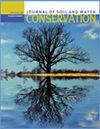保护持久性的途径:保护计划后持久草原的社会心理驱动因素
IF 2.6
4区 农林科学
Q2 ECOLOGY
引用次数: 0
摘要
保护保护区计划(CRP)是美国最大的私人土地保护计划,为北美大平原草原的土壤、水和野生动物的健康做出了重大贡献。然而,该计划的期限有限的合同并不能保证当土地所有者不再登记时,该计划所产生的植被和相关环境效益将持续下去。通过对大平原南部地区现有或过期CRP合同的土地所有者的调查,本研究探讨了参与CRP结束后与行为持久性相关的五种途径-认知,动机,资源,社会影响和行为惯性-在草原持久性中的作用。在现有CRP合同的土地所有者中,未来坚持使用草地的意图与积极的项目经验、将CRP农田保留在草地上的感知便利性和可取性以及改善其田地的美丽或其对野生动物或牲畜的价值的内在动机相关。此外,CRP合同到期的土地所有者报告的草地持久性与改善其田地的土壤和水条件以及自然和物质资源的可用性的动机有关。在这两个土地所有者群体中,草地持久性与土地所有者决策中经济动机的重要性呈负相关,与其他人如何管理该地区前CRP土地的规范性影响呈正相关。这些对规划后土地所有者行为驱动因素的见解为认知、动机、社会、资源和行为途径在通过CRP建立的草原持久性中的作用提供了支持,并为促进大平原土地、人民和野生动物的持久利益开辟了多种规划和政策机会。本文章由计算机程序翻译,如有差异,请以英文原文为准。
Pathways to conservation persistence: Psychosocial drivers of durable grasslands following the Conservation Reserve Program
The Conservation Reserve Program (CRP), the largest private lands conservation program in the United States, has contributed substantially to the health of soil, water, and wildlife of the grasslands in the Great Plains of North America. However, the program’s limited-term contracts offer no guarantee that the vegetation and associated environmental benefits produced by the program will endure when landowners are no longer enrolled. Through a survey of landowners in the southern Great Plains with current or expired CRP contracts, this study explored the role of five pathways previously linked to behavioral persistence—cognitions, motivations, resources, social influences, and behavioral inertia—in grassland persistence after participation in CRP ends. Among landowners with current CRP contracts, intentions to persist with grassland in the future were correlated with positive program experiences, the perceived ease and desirability of keeping their CRP field in grass, and intrinsic motivations to improve the beauty of their field or its value for wildlife or livestock. Reported grassland persistence among landowners with expired CRP contracts was additionally correlated with motivations to improve their field’s soil and water conditions and the availability of natural and material resources. Across both landowner groups, grassland persistence was negatively associated with the importance of financial motivations in landowners’ decision-making and positively associated with normative influences related to how others manage former CRP land in the area. These insights into the drivers of postprogram landowner behavior provide support for the role of cognitive, motivational, social, resource, and behavioral pathways in the durability of grasslands established through CRP and open multiple programmatic and policy opportunities for promoting enduring benefits for the land, people, and wildlife of the Great Plains.
求助全文
通过发布文献求助,成功后即可免费获取论文全文。
去求助
来源期刊
CiteScore
4.10
自引率
2.60%
发文量
0
审稿时长
3.3 months
期刊介绍:
The Journal of Soil and Water Conservation (JSWC) is a multidisciplinary journal of natural resource conservation research, practice, policy, and perspectives. The journal has two sections: the A Section containing various departments and features, and the Research Section containing peer-reviewed research papers.

 求助内容:
求助内容: 应助结果提醒方式:
应助结果提醒方式:


